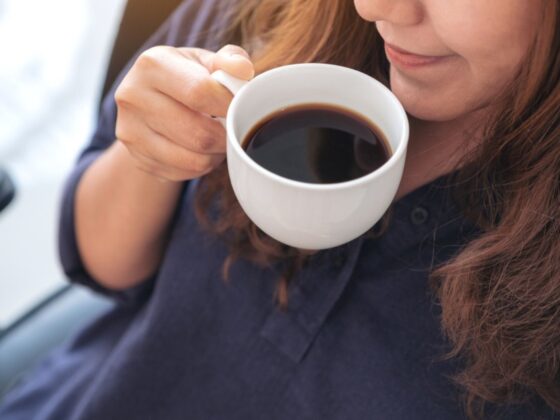‘I’m a Chef—The ‘Blanch and Shock’ Technique Is the No. 1 Time-Saving Trick That Anyone Who Eats Veggies Needs To Learn’
[ad_1]
In an effort to learn how to cook vegetables that taste like they came straight from the kitchen of an award-worthy restaurant (aim high, folks), we called in a professional. We spoke with Matthew Padilla, the culinary innovation director of True Food Kitchen, who leads up all 43 of their kitchens and is the main developer of their menu. According to him, the secret to preparing delicious veggies comes down to two words: blanching and shocking. Ahead, we break down this simple cooking technique that’ll level up the way your veggies taste from here on out and keep them vibrant and crisp as ever.
How to blanch and shock vegetables
As a culinary school graduate, I can tell you that this is one of the first lessons we learned in class—and I promise that blanching and shocking is beyond simple.
First, bring a large pot of salted water to a boil. Then, drop in the veggie of your choice into the boiling water for a few seconds (this will vary depending on the ingredient). This part is otherwise known as the blanching, which—for a little scientific background—serves two main functions. On the one hand, this process stops enzyme actions to help preserve its flavor, color, and texture. And on the other, it helps preserve the food by removing microorganisms on the surface that can lead to spoilage.
So, we got step one down (the blanching) of the two-part process. Up next, the shocking: In order to stop the vegetables from overcooking once it’s been blanched, you’ll want to shock ‘em, aka stop the cooking with drastically cold temperatures. To do so, fill a large bowl with iced water and drop in the scalding veggies immediately once they’re done cooking. Et voilà! Vibrant, perfectly crisp veggies.
Important tips from a professional chef for mastering this technique
Of course, Padilla has acquired a few tips and tricks throughout the years on ensuring his blanching and shocking technique is perfected—and fortunately, he’s not gatekeeping them from us. For starters, he says the amount of water you use can make or break your final results. “I believe the more water, the better. One key to blanching is to have enough water so that you don’t lower the water temperature below boiling when you add the product in,” Padilla says.
Also important: Starting out with refrigerator-cold produce can quickly drop the temperature of the water, making the blanching less effective. An easy solution? Work in batches, Padilla says. “You can do this by using a larger pot or by working in batches,” he says, to ensure the water temperature remains largely unaffected.
Additionally, Padilla recommends being very generous with how much salt you use to season the water, similar to when making pasta. “The water tastes nearly as salty as the ocean when I blanch,” he says. This will help not only season the veggies but also raise the boiling point of the water, which will help maintain the temperature as more ingredients are introduced.
READ RELATED: 9 Best Low-Calorie Alcoholic Drinks
“The water tastes nearly as salty as the ocean when I blanch,” he says. This will help not only season the veggies but also raise the boiling point of the water, which will help maintain the temperature as more ingredients are introduced.
Another quick note: The chef says that blanching can help extend the shelf life of an ingredient for a few days at most. However, if produce is on the brink of spoiling, blanching and shocking is a great way to squeeze an extra day or two out of the ingredient before it’s past the point of no return.
How long should you blanch vegetables?
Although Padilla doesn’t rely on precise time as much as he does on visual cues of doneness, he shared a few rough guidelines for blanching a few popular veggies. “I rely less on time because a lot of guidelines you’ll hear will result in overcooking your vegetables. Instead, I prefer to test each item myself and err on the side of ‘just cooked,’ and it’s tender with a nice snap,” he says.
But if you prefer having specific parameters to follow (hi, virgo queens), Padilla offers these helpful guidelines for those new to the technique to follow:
- Green beans: 40 seconds
- Asparagus: 40 seconds
- Broccoli: 45 seconds
- Tomato: 20 seconds
- Spinach: 5 seconds
- Carrot: 1-5 minutes (depends on size)
- Potatoes: 1-5 minutes (depends on size)
- Corn off the cobb: 45 seconds
How to make the best oven-roasted veggies:
Source
[ad_2]
Source link

